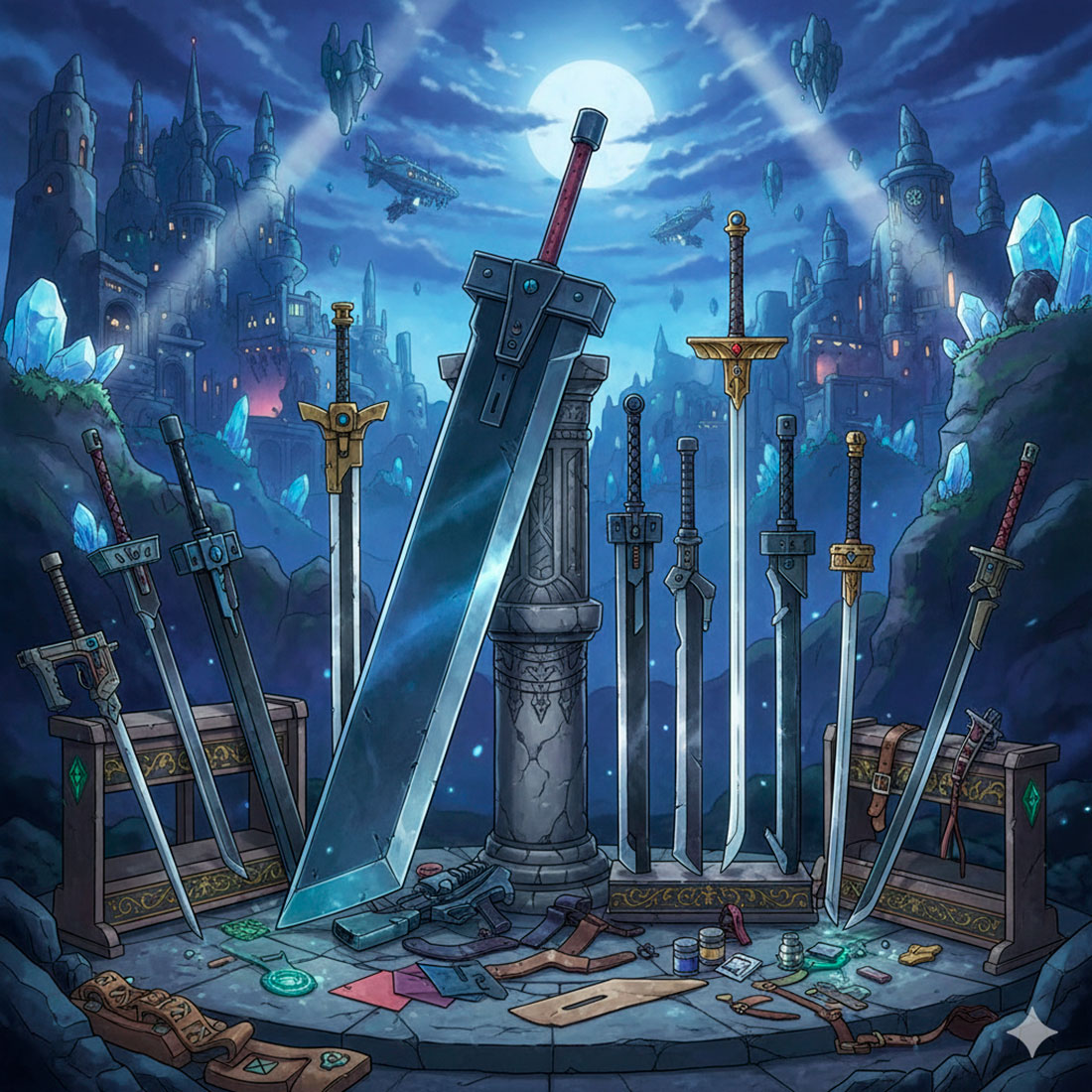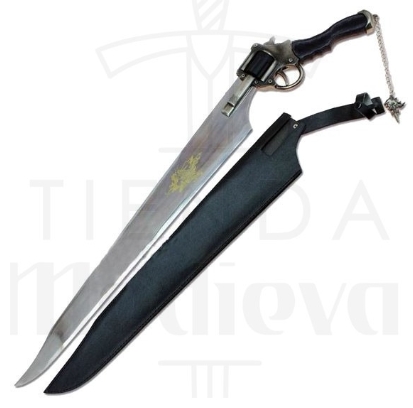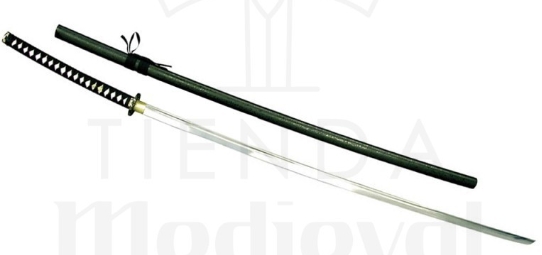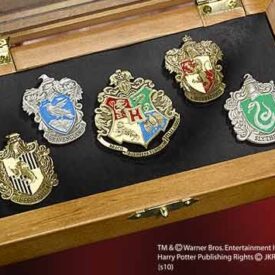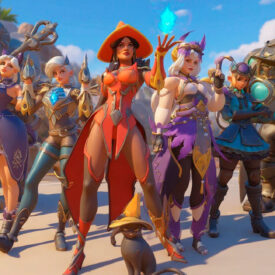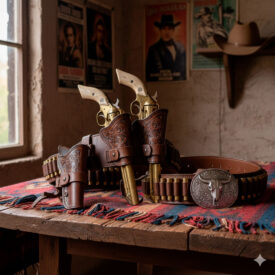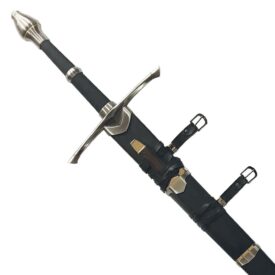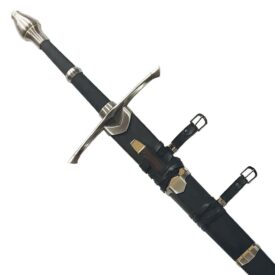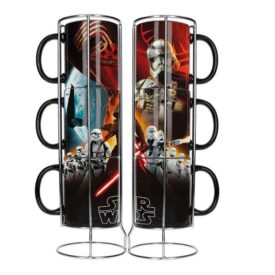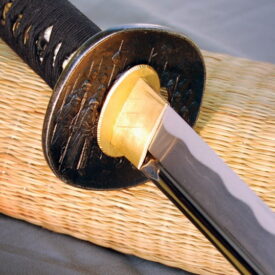Have you ever dreamed of wielding Cloud’s imposing Buster Sword, Sephiroth’s elegant Masamune, or Squall’s innovative Gunblade? Final Fantasy, a saga that has captivated millions with its epic stories and unforgettable characters, has given us an arsenal of weapons as iconic as those who carry them. For cosplay enthusiasts, recreating these works of art is an essential part of embodying their favorite heroes and villains. But how do you achieve the authenticity and impact of these legendary swords?
In this article, you will dive into the exciting world of Final Fantasy sword replicas. We will explore everything from the most suitable materials for their construction to essential techniques, as well as the key differences between weapons from different installments. Get ready to discover how to take your cosplay to the next level and unsheathe a piece that tells its own story.
Emblematic Final Fantasy Swords: Evolution by Installment
The Final Fantasy saga has developed a bestiary of weapons as iconic as its characters; many swords transcend a single game and reappear with their own variants, statistics, and legends. Below is a chronology by installment (ordered by release) with the most relevant facts and weapons related in the provided texts.
| Era | Event |
|---|---|
| Final Fantasy VII (1997) | |
| Buster Sword | Cloud’s initial weapon. Colossal blade and iconic symbol; inherited from Zack Fair (who received it from Angeal Hewley). Represents legacy, suffering, and the weight of the past. |
| Fusion Sword | Evolution of the Buster: maintains full form but can be divided into six functional swords. Cloud uses it in Advent Children and executes his ultimate technique Omnislash V.5. |
| Other Cloud weapons | Extensive repertoire: from Murasame and Ragnarok to the Ultima Weapon (Attack +100; damage linked to Cloud’s HP). The Yoshiyuki has a unique effect (multiplies attack based on dead allies). |
| Masamune (Sephiroth) | Extremely long and emblematic katana of Sephiroth. Tetsuya Nomura confirms that it changes shape due to a supernatural component; in Ever Crisis, its forging linked to a massacre and corruption is revealed. |
| Final Fantasy VIII (1999) | |
| Gunblade (Revolver) — Squall | Squall’s characteristic weapon: combines sword and gun. Doesn’t shoot bullets as such: uses recoil to increase the force of the slash. Design with Griever motif. |
| Final Fantasy IX (2000) | |
| Excalibur / Excalibur II | In FFIX, Excalibur is Steiner’s weapon (77 ATK, Holy element). Excalibur II (103 ATK) is the “true” Excalibur and requires completing the game in less than 12 hours to obtain. |
| Zidane and Steiner: notable weapons | Zidane uses Masamune (62 ATK, Doom) and the powerful Ultima Weapon (100 ATK, Sleep). Steiner has the Blood Sword (physical drain) and Excalibur II among his best swords. Ragnarok appears as Steiner’s saber (87 ATK). |
| Final Fantasy X (2001) | |
| Masamune (Auron) | The Masamune appears as Auron’s Celestial Weapon; it reappears here as a katana linked to this samurai character. |
| Other weapons | Tidus can equip the Mirage Sword (Magic+ enhancements). Kimahri obtains the Longinus Lance as his ultimate weapon. |
| Final Fantasy XII (2006) | |
| Weapon and katana classification | Katanas depend on Strength and Magic Power (ideal for pure damage); the Masamune and Kumbha are prominent katanas (high combo probability). Ninja Swords depend on Speed and Strength; Daggers combine Speed and Strength and allow for shields. |
| Masamune in FFXII | It is presented as a powerful katana (e.g., 111/117 in certain values), with high evasion and good combo probabilities, especially with Genji Gloves. |
| Final Fantasy XIII (2009) | |
| Gunblades (Blazefire Saber) — Lightning | Lightning’s gunblade version (Blazefire Saber) is more versatile: multiple modes, can switch between blade mode and pistol/shotgun mode, adapting its functionality to combat. |
| Final Fantasy XV (2016) | |
| Noctis’s Weapons | Noctis has the Ultima Blade (best sword in the main game) and Sarah’s Shortsword (high damage under specific conditions: max health or light-weak enemies). |
| Gunblades and collaborations | Although gunblades are not native to FFXV, they appear in collaborations (e.g., Vortex weapons in the FFXIV ↔ FFXV collaboration) as powerful weapons. |
| Final Fantasy XVI (2023) | |
| Excalibur | Coveted weapon (268 ATQ / Destruction). To obtain it, Clive must advance to the confrontation with Titan and complete the side quest chain “A Blacksmith’s Blues.” |
| Ragnarok | Legendary sword (325 ATQ / 325 Destruction) obtainable by completing the side quest “A Blacksmith’s Blues IV” after the previous parts; its reforged version is necessary to forge the Ultima Weapon. |
| Everdark, Defender, Gotterdammerung | Everdark (315/315) is forged with Dark Fragment; Defender (320/320, upgradable) can be purchased and scaled in NG+; Gotterdammerung (375/375) is forged with orichalcum and rare materials. These weapons are involved in forging the Ultima Weapon. |
| Ultima Weapon (FFXVI) | Best sword in the game (700/700), exclusive to New Game +. It is forged with the “Utterance of Creation” and Reforged versions of Everdark and Gotterdammerung. |
| Cross-cutting observations: recurring swords and legends | |
| Excalibur (recurring) | Present in almost all installments: usually associated with the Holy element and the role of the knight. In FFXII, it appears embedded in a rock in the Great Crystal; in FFIX and FFXVI, its most powerful versions require special conditions to obtain. |
| Masamune (recurring) | Appears as a weapon of antagonists or samurai (Sephiroth, Auron, Zidane). It is usually a katana of great length and power, with different variants and roles depending on the installment. |
| Ragnarok (recurring) | Legendary sword that reappears in several installments with different attack figures: e.g., FFIX (87 ATQ), FFVII (equippable to Cloud with +97 ATQ and magical stats) and FFXVI (325/325, enhanced version for the endgame). |
| Gunblades: concept and influence | From FFVIII (Squall’s Revolver) to modern variations (FFXIII, FFXV/collaborations), the gunblade mixes sword and firearm. In FFVIII, its mechanic is recoil to enhance slashes; in later installments, it gains modes and transformations. |
Forged Icons: The Most Emblematic Swords for Your Final Fantasy Cosplay
Without a doubt, one of the most recognizable swords in the world of video games is Cloud Strife’s Buster Sword. Colossal and with a blade of epic proportions, this weapon is not only a symbol of the legacy of Zack Fair and Angeal Hewley, but also a fundamental piece that defines the silhouette of Final Fantasy VII’s protagonist. Its initial design, which evokes a more rudimentary but striking form, contrasts with its evolution into the Fusion Sword from Advent Children, capable of splitting into several blades for combat.
In contrast to the robustness of the Buster, Sephiroth’s Masamune stands as the epitome of deadly elegance. This katana, of disproportionate length and sinister beauty, is as iconic as its wielder, the legendary villain of Final Fantasy VII. Its mere presence evokes power and dark mystery, making it a favorite choice for those who seek to instill fear and respect with their cosplay.
Breaking with convention, Squall Leonhart’s Gunblade from Final Fantasy VIII is a hybrid between sword and firearm that redefines the concept of a fantastic weapon. Its mechanism, which uses the recoil of a shot to enhance cuts, makes it a fascinating challenge for any cosplayer looking to innovate and stand out. Its design, often adorned with the Griever motif, is instantly recognizable and has left an indelible mark on the imagination of fans.
From the movie Final Fantasy VII: Advent Children, Kadaj’s Souba, a double-edged katana, offers a unique aesthetic and the functionality of being detachable into two pieces. Its double wooden sheath only adds a touch of intrigue to this peculiar weapon, ideal for cosplayers who appreciate details and versatility.
The Art of Forging Your Own Legend: Materials and Techniques for Replicas
Creating a Final Fantasy sword replica for cosplay is an art that combines passion, skill, and the right choice of materials. Whether you’re looking for a display piece or a functional accessory for events, the key is balance between fidelity, safety, and handling.
Materials: The Foundation of Your Creation
The selection of material is crucial and depends on the purpose of your sword:
| Replica Type | Recommended Materials | Key Considerations |
|---|---|---|
| Decorative / Collection |
|
Priority: fidelity to detail, weight, and durability. These are heavy pieces and not suitable for active manipulation at events. |
| Cosplay / LARP |
|
Priority: lightness, safety (soft and no sharp edges), ease of transport, and resistance for use at events. |
DIY Techniques: Bringing Fantasy to Life
For those adventurers who want to forge their own weapon, DIY techniques are fundamental. Using EVA foam is one of the most effective methods for giving lightweight and detailed shape to complex weapons. Combining it with wood or PVC for the internal core ensures the necessary rigidity for large swords.
Basic tools such as grinders, drills, and hand tools (cutters, sandpaper) are essential for cutting, sanding, and assembly. The application of acrylic or spray paint, along with sealants and lacquers, is key to achieving realistic finishes that replicate metallic textures or magical elements. Digital PDF patterns, available on platforms like Etsy or through YouTube tutorials, have become an invaluable resource, allowing cosplayers to customize and build their swords with great precision.
The Importance of Detail and Balance
Regardless of the material, fidelity to the original design is paramount. Every notch, every color, every texture must be replicated with care so that the sword is instantly recognizable. In addition, especially in large pieces like the Buster Sword, it is vital to strike a balance between imposing size and manageable weight. The best cosplays are those that, in addition to being visually stunning, allow the cosplayer to move comfortably and safely during an event. The durability of the joints, especially in the handle, is a small but crucial detail to prevent incidents and ensure that your masterpiece withstands the imaginary fray of battle.
Most iconic replicas ready to be in your display cases
Clearing up doubts about Final Fantasy swords for cosplay
What are the most recommended materials for making a Final Fantasy cosplay sword?
To make a Final Fantasy cosplay sword, the most recommended and accessible materials are:
- EVA foam (foam, foamy): It is the most popular material for its lightness, ease of cutting, shaping, and adhesion. It allows for complex details, is safe for events, and is comfortable to transport.
- Foamboard: An economical and lightweight option, ideal for simple structures. It requires a bit more work on the finish and reinforcement, but it is excellent for beginners.
- Wood and PVC: For the core or internal structure of the sword, they provide rigidity and support, especially for large swords like the Buster Sword.
- Expanded polystyrene (Styrofoam): Used as filler to lighten the weight without compromising the shape.
- Acrylic paints and lacquer: For the final finish, to give color and protect the surface.
- Contact adhesive and contact cement: They are essential for joining EVA foam pieces and other materials durably.
These materials allow for creating lightweight swords, safe for events, and with a professional finish, following the characteristic style of Final Fantasy.
What DIY techniques are most effective for creating Final Fantasy swords?
The most effective DIY techniques for creating Final Fantasy swords, such as Cloud Strife’s Buster Sword or the Gunblade, primarily include the use of EVA foam to give lightweight and detailed shape, wood for a solid and durable structure, and cardboard combined with paint and accessories for more accessible and quicker projects. These foundations are complemented by the use of tools such as grinders, drills, and hand tools for cutting, sanding, and assembly, as well as the application of acrylic or spray paint to achieve realistic and decorative finishes. It is also common to use strong adhesive bonding techniques and the incorporation of elements such as screws or studs for metallic and textured details. These techniques allow for adjusting the level of detail, weight, and durability depending on the purpose (cosplay, exhibition, or play).
What are the most popular Final Fantasy swords among cosplayers?
Among the most popular Final Fantasy swords for cosplayers, the following stand out:
- Cloud Strife’s Buster Sword (Final Fantasy VII): This is one of the most iconic swords in the saga, known for its impressive size and robust design. It is a crucial piece for any cosplayer who wants to portray Cloud Strife.
- Sephiroth’s Masamune (Final Fantasy VII): This sword is famous for its length and elegance, and it is the characteristic weapon of the villain Sephiroth. It is very popular among cosplayers who want to impersonate this iconic character.
- Squall Leonhart’s Gunblade (Final Fantasy VIII): Although not a traditional sword, the Gunblade is a combination of pistol and sword that has become a symbol of Squall Leonhart, making it very popular among cosplayers.
What are the differences between Final Fantasy VII and Final Fantasy XVI swords?
The key differences between Final Fantasy VII and Final Fantasy XVI swords are:
- In Final Fantasy VII, swords are primarily associated with specific characters (like Cloud’s sword) and have linked special abilities, as well as limited upgrades. Weapons function within a system based on character equipment and their unique abilities.
- In Final Fantasy XVI, swords are part of a wide arsenal that Clive can use, with numerous different weapons, each with distinct attacks and impulses. Weapons can be crafted and upgraded through a blacksmithing system that requires specific materials, with a progressive upgrade tree (basic, enhanced, and superior versions).
In summary, Final Fantasy VII tends to have iconic swords tied to characters with fixed abilities, while Final Fantasy XVI offers a variety of swords and weapons that can be crafted, enhanced, and customized more extensively.
Where can I find patterns or templates to make Final Fantasy swords?
You can find patterns or templates to make Final Fantasy swords on platforms like Etsy, where they sell 3D models and digital cosplay templates that include detailed blueprints to create accurate replicas. There are also numerous YouTube tutorials that show step-by-step how to make iconic swords like the Gunblade or the Buster Sword, some even share measurements and methods for making them with different materials like paper, wood, or foam. Etsy offers ready-to-download digital patterns, while YouTube provides practical guides for creating swords from scratch.
Your Own Legend is About to Be Written
The Final Fantasy universe is vast, and its weapons, true extensions of their wielders’ will, are a fundamental part of its mystique. From homemade crafting with EVA foam to acquiring a steel replica for collectors, the path to wielding your ideal Final Fantasy sword is filled with passion and creativity. Remember that every detail counts, from the choice of material to the final touch of paint, so that your cosplay not only captures the essence of the character but also tells a story of dedication and admiration for one of the greatest video game sagas. May your adventure only end with the sword of your dreams in your hands!
VIEW ALL FINAL FANTASY SWORDS | VIEW ANIME AND VIDEO GAME KATANAS
